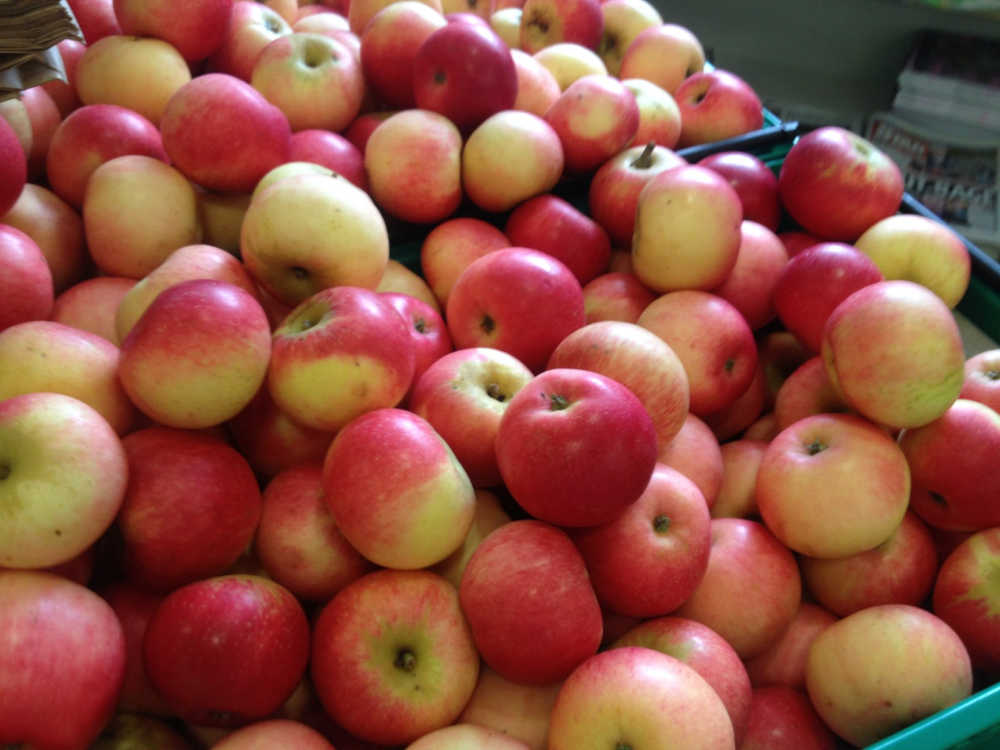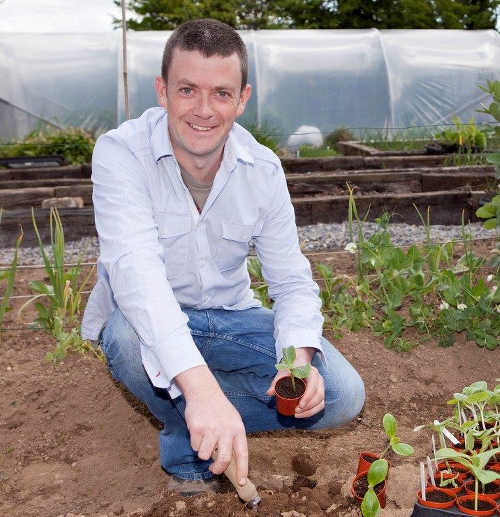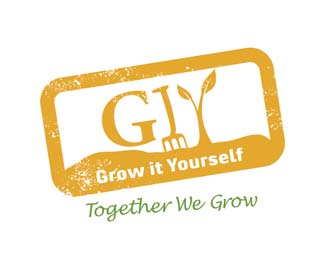Grow It Yourself - December

I am a massive fan of apples and the “apple a day keeps the doctor away” lessons of youth have stayed with me all my life. I’ve often thought it strange however, that such a traditional saying must surely have originated at a time when it would have been difficult to follow the advice and eat an apple each day all year round.
The apple season here runs from late August until Christmas but since apples store quite well (kept somewhere cool and dark), you could eat Irish apples until March or April. After that, traditionally, it was time to move to the great summer fruits such as currants and berries and then wait until August for the new season apples to appear again.
These days of course one can eat an apple a day all year round with no problem whatsoever thanks to the abundance of imported apples available in our supermarkets. In a strange way, the apple-lover in me would be glad about this if we were only eating imported apples when the Irish ones were all finished. But sadly, that’s not the case.
In fact, 95% of the €100 million worth of apples consumed in Ireland annually are imported. Even in peak apple season in Ireland, the apples on our supermarket shelves are more likely to have been grown in New Zealand, South America, China and India.
This is bad enough for the planet and for our indigenous apple industry but it’s also bad for us as consumers. As is the case with most fruits and vegetables, the commercial apple market has been homogenised and rationalised to the point where almost all of the apples consumed worldwide come from just a handful of varieties such as Pink Lady, Golden Delicious and Granny Smith.
As consumers, our flavour choices are therefore incredibly limited. Though we have been conditioned to believe that there are just handfuls of apple varieties, in fact, we have hundreds of native varieties in Ireland alone. One of our great apple growers and advocates, Con Traas, grows over 60 varieties on his 40 acre farm in Cahir, Co Tipperary.
Growing your own apples is a good way to access a superb, seasonal product with zero food miles. In addition you can also try lots of different varieties and flavours. But even if you can’t or don’t want to grow all your own apples, growing even a small amount of them is a great way to expose yourself to those new varieties and flavours.
Once you experience the joys of an Elstar, Katy, Discovery or Jonagold apple it’s hard to go back. It will also give you a new found appreciation for the work done by our commercial apple producers. We’re in the middle of Irish apple season - make sure to vote with your wallet and buy in-season Irish apples.
The Basics – Planting an Apple Tree
If you choose good varieties, a suitable rootstock and plant them properly you will get delicious fruits for many years – with hardly any work. There are a few things you need to know:
• You can’t just have a single apple tree – you need a suitable partner for pollination. There are three pollination groups: A, B and C (A being the earliest flowering and C the latest flowering types). The most unlucky scenario would be to have one of each type and they miss each other. Two trees of one pollination group that flower around the same time are ideal partners. Crab apples are perfect pollinators for apples as they flower for a long period of time.
• Steer clear of supermarket favourites like Golden Delicious, Gala or Cox’s Orange Pippin trees. They don’t perform well in Ireland and are very susceptible to scab and need to be sprayed regularly with a fungicide. My favourite varieties are Discovery, Katy (or Katya) and Jonagold.
• Apple trees are available as bare-root trees until early March. They cost about half the amount compared to containerised plants. Bare-root simply means that the trees have been dug up from the nursery, packed in a bag with damp peat.
Planting:
Dig a planting hole about 60cm in diameter and about 40cm deep and mix some old garden compost with the existing soil. The next step is to drive in the stake firmly and then place the tree next to the stake. The stake should be on the side of the prevailing wind. When you plant make sure that the soil level is like it was in the nursery. You should never bury the grafting union. First loosely fill the soil around and make sure it fills all spaces. Every now and again firm the soil with your heels. When finished fix a tie near the top of the stake.
GROW HQ
Check out the courses, classes, events and more at the home of the GIY movement, GROW HQ, in Waterford city. In addition to our 65-seat home-grown food café and shop, we’ve a range of growing and cooking courses happening weekly – for courses and events happening this month, check out www.growhq.org.
Things to Do this Month - December
To Do
As you clear remaining crops from your veggie patch, dig the beds over and add well rotted compost or manure. Get Educated – book yourself on a course! Start planning what you would like to grow next year and work out what crop rotation system you are going to use. Study seed catalogues carefully before deciding on the best varieties to grow. Start a Compost corner or heap. Keep an eye on your stored veggies and discard anything that’s rotting. Collect and store leaves in bags to make leaf mould or use as cover for bare soil.
Sow
If you haven’t already done so plant garlic – it should be in the soil by the shortest day of the year. Bring herbs like mint, chives, lemon balm, parsley, thyme indoors by lifting and potting them up.
Harvest
Buck the seasonal trend by continuing to harvest winter salad leaves like corn salad, land cress and mizuna. You should still have at least some produce left in the December veggie patch e.g. winter cabbages, Brussels sprouts, leeks, kale, Jerusalem artichokes, carrots, celery, turnips, parsnips, winter cauliflowers, swedes, spinach, chard and celeriac. From your stores you can enjoy pumpkins and squashes, potatoes, onions, apples, beetroot and garlic.
Recipe of the Month – Winter Omelette
This recipe uses two great stalwarts of the winter kitchen garden – squash and leeks. The yoghurt is an interesting addition. Serves 6.
Ingredients
• 2 tablespoons extra virgin olive oil
• 1 leek, white and light green parts, cleaned and chopped
• 2 garlic cloves, minced
• 350g winter squash, cut in dice
• Salt and freshly ground pepper to taste
• 2 tablespoons chopped fresh mint and the same quantity of fresh dill.
• 8 eggs
• 150ml Greek-style yogurt
• 40g freshly grated Parmesan cheese
Directions
Preheat the oven to 180 degrees. Heat 1 tablespoon of the oil in a large, heavy pan. Add the leek and cook, stirring, until tender. Add the garlic, stir together, and add the squash. Cook, until tender, 10 to 12 minutes. Season to taste. Stir in the herbs. Remove from the heat.
Place the remaining tablespoon of oil in a 9-inch casserole disk, brush the sides of the pan with the oil and place in the oven.
Meanwhile, whisk the eggs in a large bowl and season. Whisk in the yogurt and the Parmesan. Stir in the squash mixture.
Remove the baking dish from the oven and pour in the egg mixture.
Place in the oven, and bake 30 minutes or until lightly colored. Allow to cool for at least 10 minutes before serving.
Become a VIPea
By joining GIY you help us to continue the work of supporting people just like you to grow food at home, at school, in the workplace and in the community – this year we will support over 500,000 people and 9,000 community food growing groups and projects. It costs just €35 to join GIY for a year, and to say thanks we will send you a seasonal copy of our supporter’s magazine GROW and some GIY seeds for you to sow each quarter. It will also entitle you to a 10% discount at GROW HQ and our online shop. Join today at www.GIY.ie.
About GIY

GIY is a not-for-profit organisation that aims to create a healthier, more sustainable world where people grow their own food. We inspire and support people to grow food more successfully by bringing them together to share advice, tips and ideas. There are approximately 65,000 people involved in the GIY movement in Ireland, which is proudly supported by Woodies DIY.
For more information check out www.giyireland.com
Michael Kelly is a freelance journalist, author and founder of GIY Ireland.
© GIY Ireland 2017 – all rights reserved.






There are currently no comments
Leave a comment
Not a member? Register for your free membership now!
Or leave a comment by logging in with: